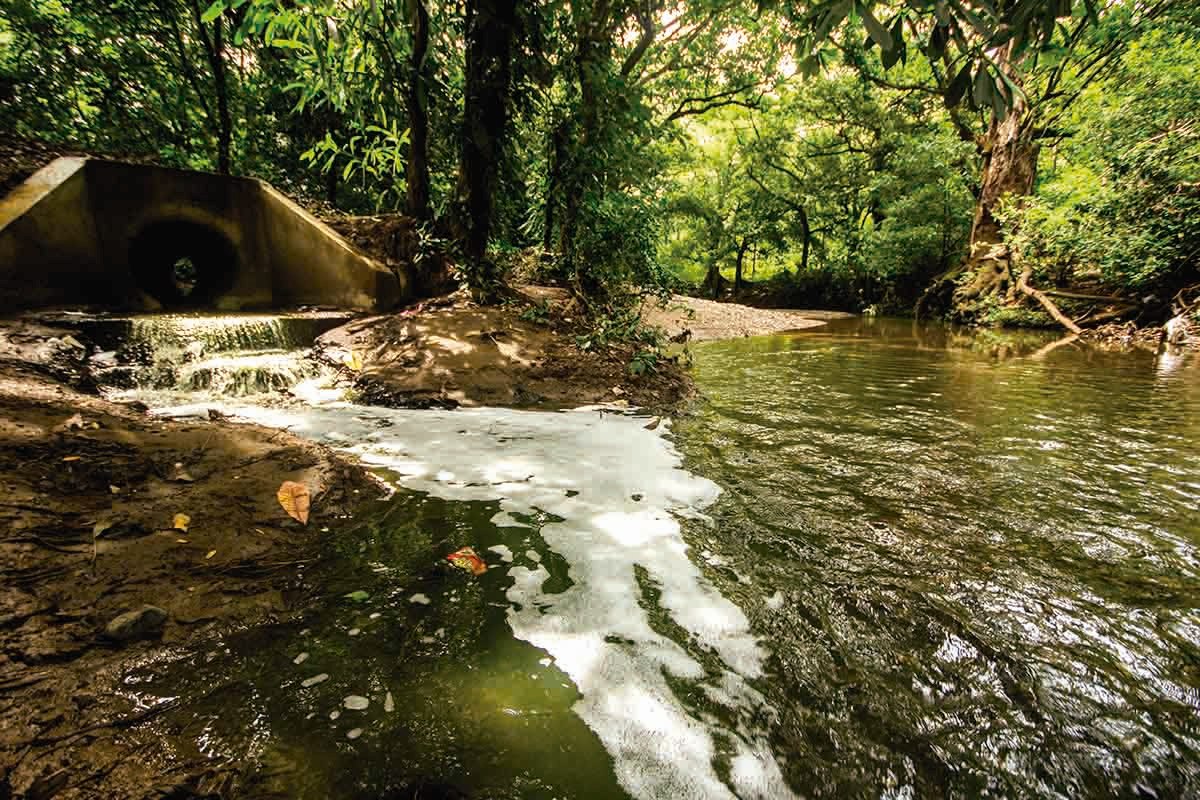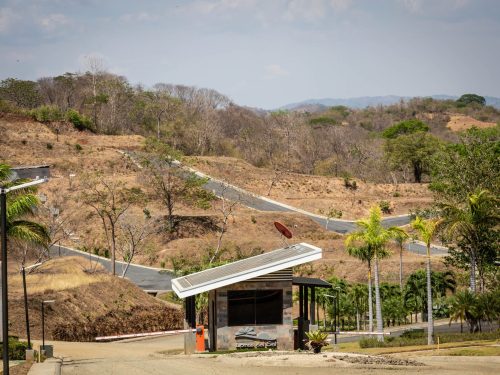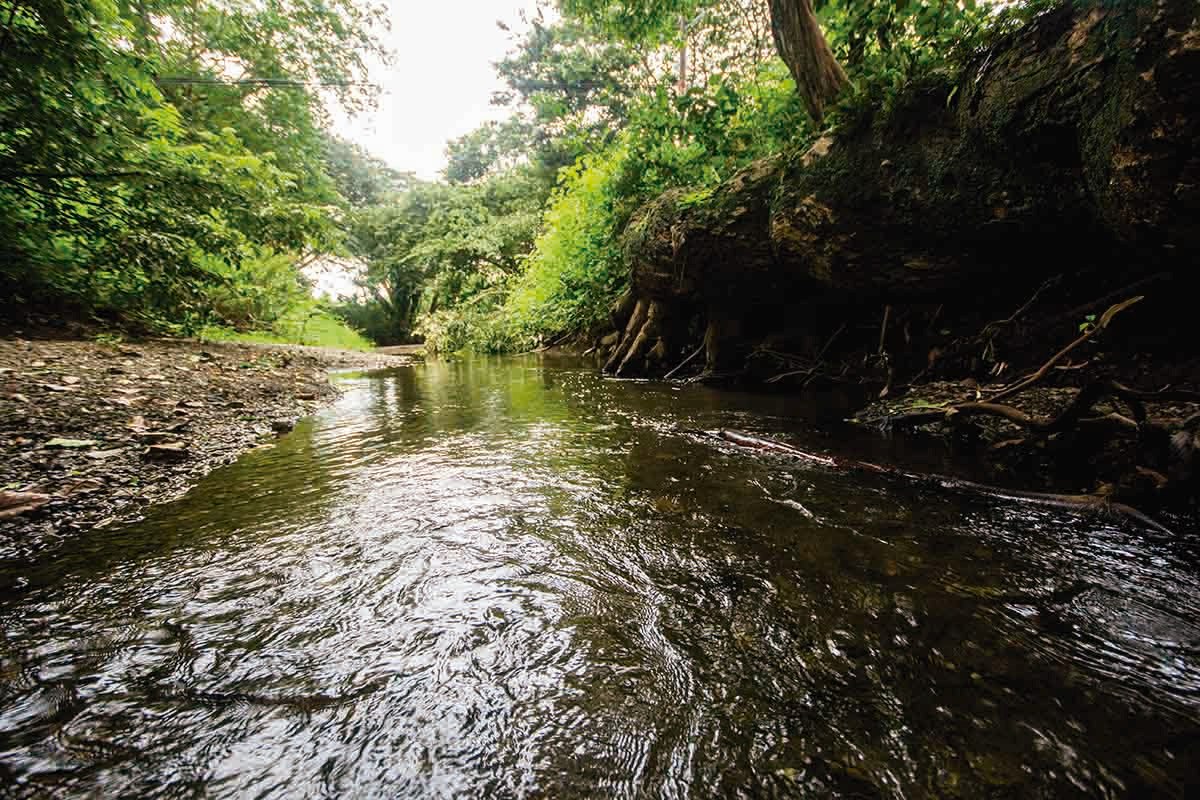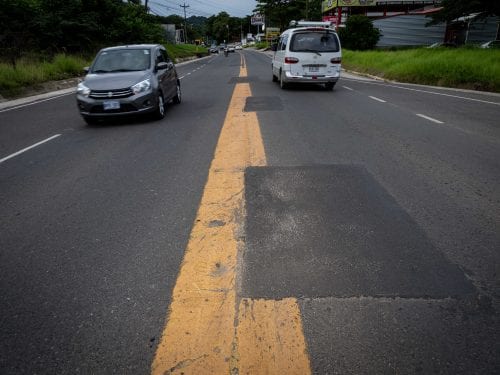
It is noon and beneath the blazing sun in Nicoya, a canal flows with water as green as moss, which first appears as a soapy foam and later descends through a cement canal to the Rio Grande.
This drainage system has existed for several decades as the Wastewater Treatment Plant (WWTP) of Aqueducts and Sewers (AyA) has discharged residual fluids into the river bed in the Matabuey neighborhood in Nicoya since 1974. The treatment plant receives wastewater from the city through the sanitation sewer.Currently Nicoya has a population of approximately 12,000 inhabitants.
Historically, the Rio Grande has been one of the main Nicoyan waterways and although its flow is not the same now as in prior times, it remains a major tributary of the Morote River, which empties into the Gulf of Nicoya and benefits the communities of Hojancha and Nandayure.
Alvaro Araya Garcia, director of Peripheral Systems Management for AyA, explained that the fluids entering the plant are deposited in one of the two lagoons where organic and fecal matter is transformed into simple compounds and friendly green microalgae. However, Araya acknowledged that although the plant reduces the pollution generated by the population of the colonial city, “in the case of the Nicoya WWTP, it is not meeting the standards requested by the regulation.”
On June 6 of this year, The Voice took a sample of the water that comes from the lagoon and falls into the river, and the results from the Water Microbiology Laboratory of the University of Costa Rica (UCR) show that both the amount of total coliforms and of fecal coliforms was greater than 1600 organisms per 100 milliliters of water.
According to the parameters set by the Regulation for Potable Water Quality, published in May of 2005, unchlorinated samples with fecal coliform values equal to or greater than 1.8 microorganisms are not considered potable.
Sergio Nuñez, regional subdirector for AyA, explained that the objective of the WWTP is to meet the law of discharge standards established by the Ministry of Environment (MINAE). “It isn’t water for human consumption. It is treated so it can be discharged in the different riverbets,” affirmed Nuñez.
The Regulation of Environmental Standards for Discharges, which came into force in 2008, is an economic instrument for environmental regulation, which is based on the principle that he who pollutes pays. It allows any entity that generates pollution, in this case AyA, to discharge fluids into the river as long as they pay the corresponding sum to MINAE.
Esmeralda Vargas, an official of the MINAE Direction of Water, explained that Lagunas de Nicoya (the generating entity) of AyA pays 477,379 colones ($955) quarterly to the institution for discharging the fluids into the Rio Grande. This amount is calculated based on the amount of volume that is dumped into the water source and the data of the quality of the water discharged.
For his part, Larry Orozco, head of the AyA office in Nicoya, said that they present quarterly operational reports on the water quality levels of the lagoons to the Ministry of Health. The Voice tried to get last quarterly report sent by AyA to the Ministry of Health, but at press time the requested information had not been received.
Remedial Plan Not Until 2015
Although AyA officials explained that the corrective plan for the plant in Nicoya is already underway, they won’t have the corresponding studies until 2014 and the construciton of a new building will possibly begin in 2015. Araya assured that at present they are getting bids to contract a study aimed to analyze the wastewater management for the city of Nicoya from a holistic point of view, as well as sewage coverage. In addition, Orozco indicated that AyA already bought land next to the current facilities for use in the improvement works for the city’s wastewater system.
Neighbors worried
Meanwhile, neighbors that live across from AyA’s lagoons showed concern for their and their family’s health, as well the strong odors emanating from the lagoons, especially in rainy season. Tamara Fonseca said, “The smell is very unpleasant and sometimes unbearable. We have to keep the door closed so it doesn’t come in.” Dinia Mayorga, another neighbor, agreed that the plant is a risk. “It is a pollutant and I think the solution would be to change the location,” she said.
For his part, Araya said, “The neighbors who have complained are ones that the municipality relocated there in front of the plant a few years ago. Remember that about 40 years ago when they built the WWTP, it was located in a place relatively distant from the population, but over the years the population has drawn closer to the point of being next to the plant,” he said.
Meanwhile, Nelson Gamboa, president of the local environmental organization Nicoyagua, said that for years he has requested a study of the water balance of the area from AyA, as well as chemical analysis reports for the water, but they still don’t have an answer.







Comments